Are you a Discerning Drinker?
Join thousands of like-minded professionals and cocktail enthusiasts, receive our weekly newsletters and see pages produced by our community for fellow Discerning Drinkers.


What is Grappa?
Words by Simon Difford
Grappa is an Italian brandy distilled from the fermented skins, pips, and stalks (known as pomace, marc, or vinaccia in Italian) left after grapes have been pressed to extract juice for winemaking. It may be bottled after distillation or matured in oak or other woods. Grappa originated in Italy and, in the EU to be termed a grappa, a brandy must be distilled in Italy from Italian grape pomace.
Unsurprisingly, given that it is made from the waste products of winemaking, grappa used to have a reputation for being closer to rocket fuel than a subtle taste experience. While there remain many unremarkable grappas, thanks to better production practices, there are now some superb grappas. Many of the best of these are produced in relatively small quantities and are delicate rather than fiery. Modern grappas are also often made from a particular grape variety, the aromas and characteristics of which can still be detected in the finished grappa.
According to the European Union, grappa must be distilled in Italy and made from Italian marc, but this doesn't prevent U.S. distillers from using the term grappa. There are further rules in place according to the Italian decree that govern the raw materials and production of grappa. The Italians rightly believe that grape skins contain many aromatic substances that impart flavour to the grappa, hence the Italian stipulation that the skins must be present in the still.
There are presently some 130 grappa distillers in Italy compared to over 200,000 at the end of the 19th century. Additionally, around 500 bottlers buy grappa from distillers to blend and bottle under their own labels, and these are also legally termed producers. There are also traders who simply own a trademark and sell grappa made by the producers.
The term 'farm grappa' is applied to wine growers who have grappa distilled from their own grape marc by a third-party distiller for sale under the same brand as their wines. The pomace may be transported long distances from the winery to the contracted distiller, so the name of a recognised and respected winemaker on a Grappa's label is not necessarily a guarantee of quality.
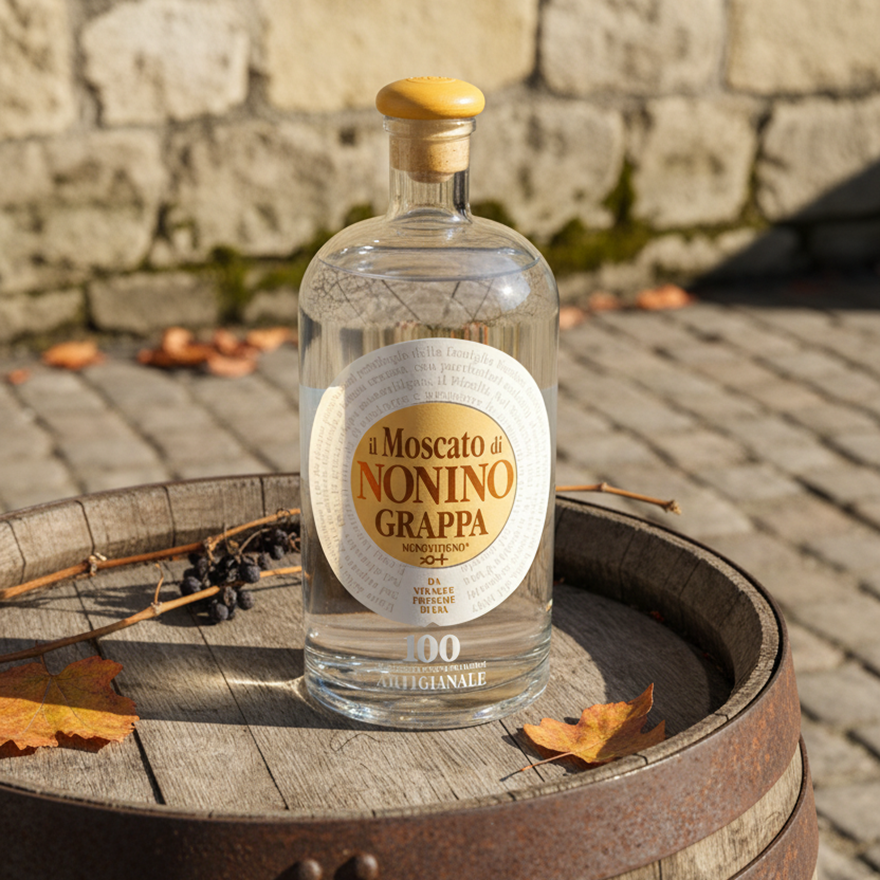
Nonino Il Moscato Grappa Monovitigno
Made using destalked, freshly harvested pomace of Moscato grapes selected from dedicated production zones. The fresh, soft pomice is fermented in temperature-controlled

Nonino Merlot Grappa Monovitigno
Il Merlot Di Nonino Monovitigno is distilled from fresh merlot grape pomace from the Fruili wine region.
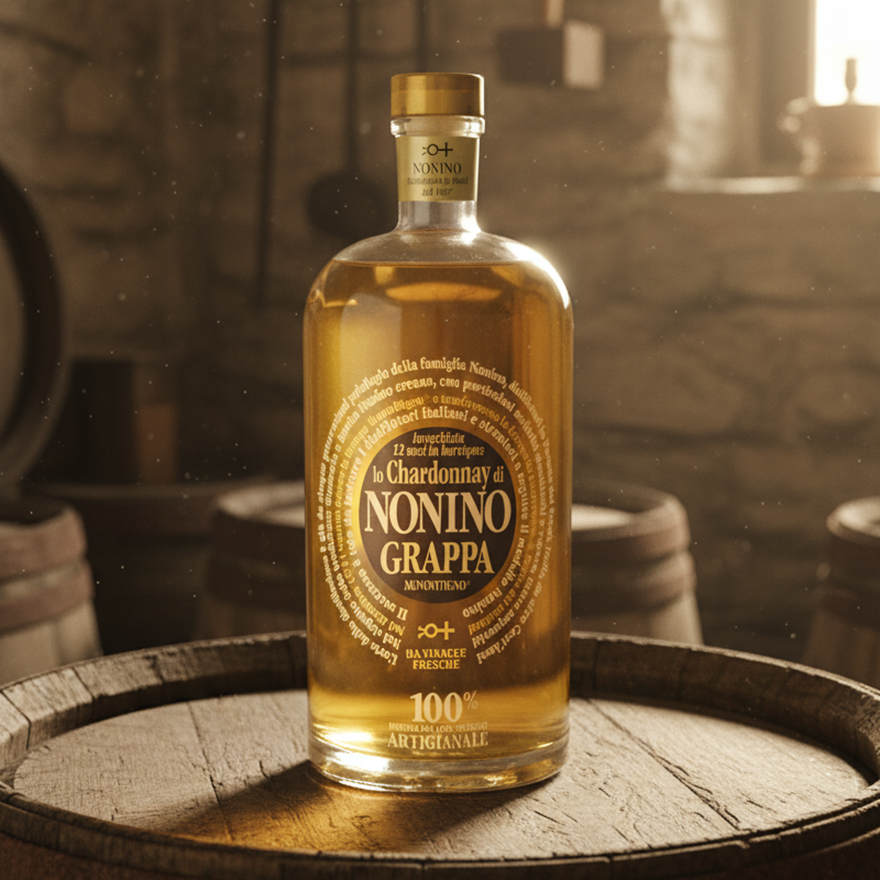
Nonino Chardonnay in Barrique Grappa Monovitigno
Distilled from selected and destalked Chardonnay grape pomace, immediately after harvest. The grappa is aged for more than 12 months in barriques.
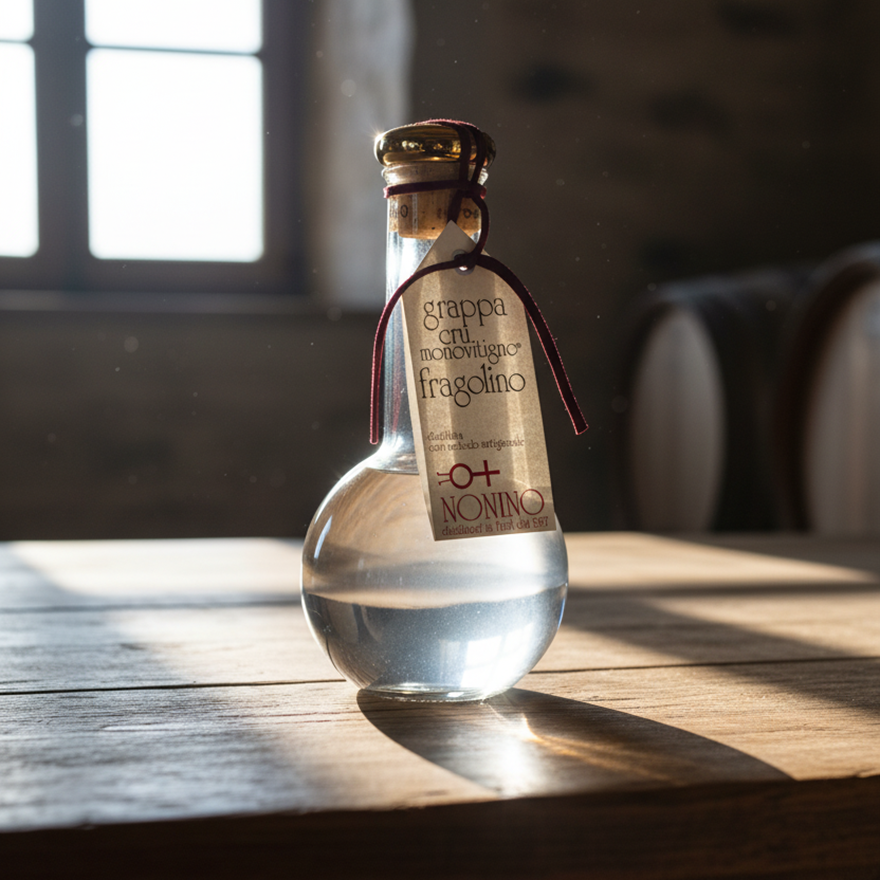
Nonino Fragolino Cru Monovitigno Grappa
Distilled from the pomace of Fragolino grapes from the Nonino Cru vineyard fermented in temperature controlled stainless steel tanks under vacuum, immediately

Nonino Picolit Cru Monovitigno Grappa
Distilled using dried Picolit grapes from Cru Nonino Vineyard in Buttrio, Friuli. Presented in a commemorative hand-blown glass silk-screen printed bottle.

Nonino Grappa Tradizione 41%
Grappa distilled from carefully destalked white and red pomace using controlled fermentation and artisanal batch distillation in steam stills renovated

Nonino Grappa Tradizione 50°
Made from destalked white and red grape pomace, with a controlled fermentation and artisanal batch distillation in steam stills renovated by Benito Nonino.
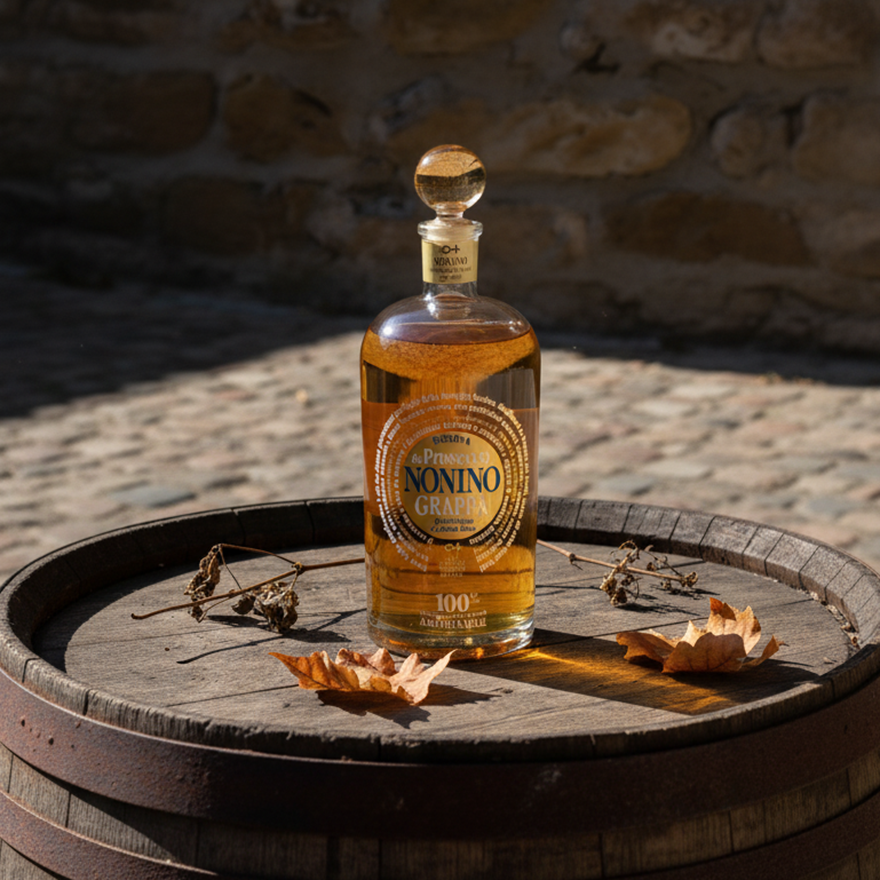
Nonino da Prosecco in Barriques Grappa
Made from selected and destalked, harvested fresh and soft pomace of Glera grape for prosecco. Batch distilled in proprietary copper steam stills designed
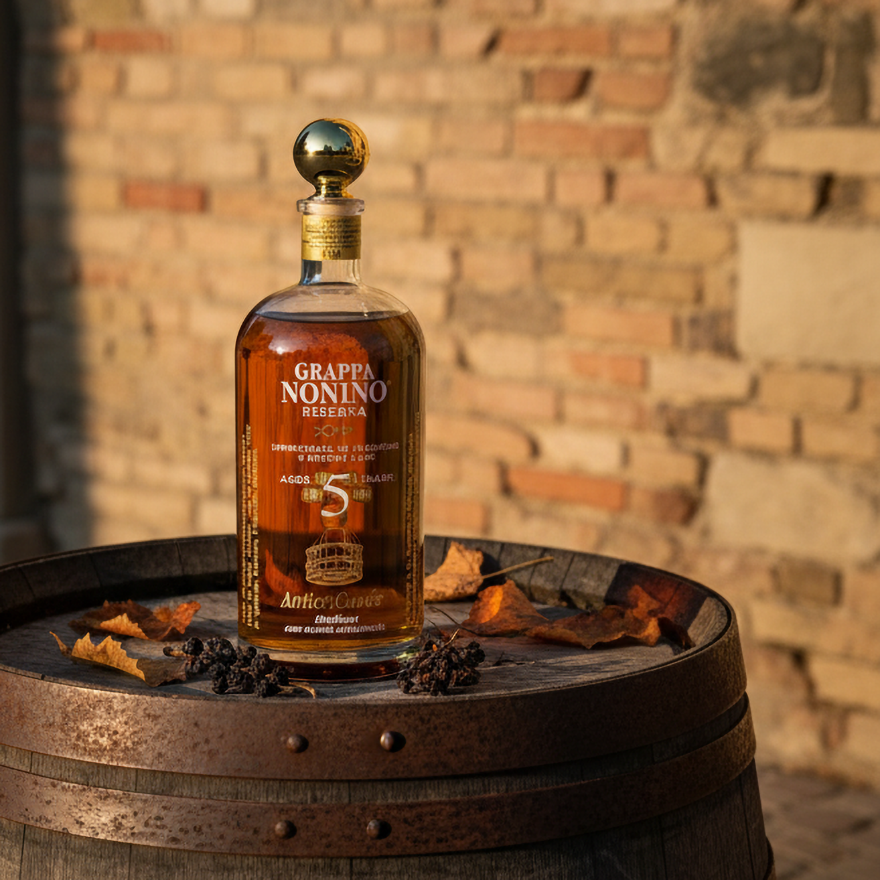
Nonino AnticaCuvée Riserva 5 Year Old Grappa
Blend of Grappas from fresh pomace, selected by the Nonino family, aged from 5 to 20 years in Limousin, Nevers and Grésigne oak barriques and small sherry





